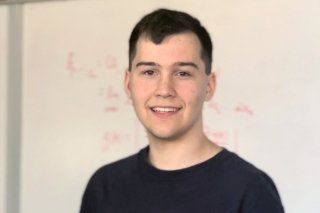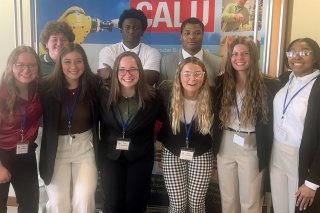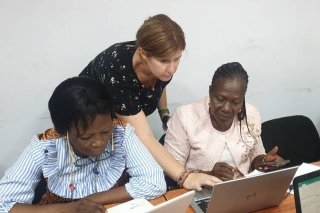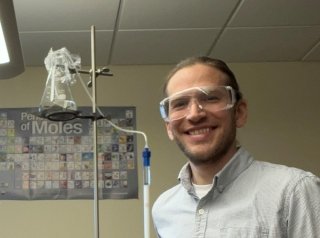The Art, and Science, of Mathematics
Posted:

Senior computer science and mathematics major John Seibert has always had a love for numbers. While others may see math as a blur of gray numerals and functions, he sees a vibrant world of possibilities worth exploring to the fullest.
Seibert took an unconventional path in his academic career. After taking university classes as a high school student at Commonwealth University’s Bloomsburg campus, he began his first year as a university student enrolled in a 400-level computer science course. Taking a high-level course was a risk, but it paid off. “I was surprised at how well I did, considering the level of difficulty in the course,” says Seibert, who declared a double major after his first semester.
“Programming is, to me, like a bird's eye view of "goal setting.” You set a goal, identify steps to achieve it, and measure the results. You see what doesn’t work and what does — and you actually see the trial and error happen.”
A drive for programming and mathematics led Seibert to undertake research, with his project “Mapping Integers to the Smallest Description of an Integer Possible in Python” winning the award for best presentation at the Susquehanna Valley Undergraduate Research Symposium in July. His project, supervised by Dr. William Calhoun, professor and chair of the Department of Mathematical and Digital Sciences, was supported by an Undergraduate Research, Scholarly, and Creative Activity grant, which supplies an opportunity for students to engage in focused research, scholarly, or creative experience appropriate to their discipline and enhance their competitiveness for jobs and graduate school. He credits his achievement to the methodical way he approached the research.
“I like to start programming with identifying a goal. Then I see what works and doesn’t work — as you can design a program that runs but gives inaccurate results. I end with getting a program with accurate results,” Seibert says. “His research is ongoing, as he plans to continue until mid-November and then share the results at the Mathematical Association of America Conference held at Villanova University and the Rose-Hulan Undergraduate Mathematics Journal.
The senior credits his success to support from his professors in the Mathematics and Digital Sciences department. Outside of class, he is a treasure of the Math Club, a member of the Association of Computing Machinery, a student representative for the Community Government Association, and a member of the Honors College. In addition, he recently finished asteroseismology research involving analyzing data of Rossby waves, which was presented at the European Cooperation in Science and Technology research conference and the Central Pennsylvania Consortium Astronomers’ Meeting.
“I like to learn and take pride in the opportunities I’ve had here. I want to make myself, my parents, the professors, and the department proud.” He plans to attend graduate school in the future, specializing in software engineering or preparing to work in academia.



